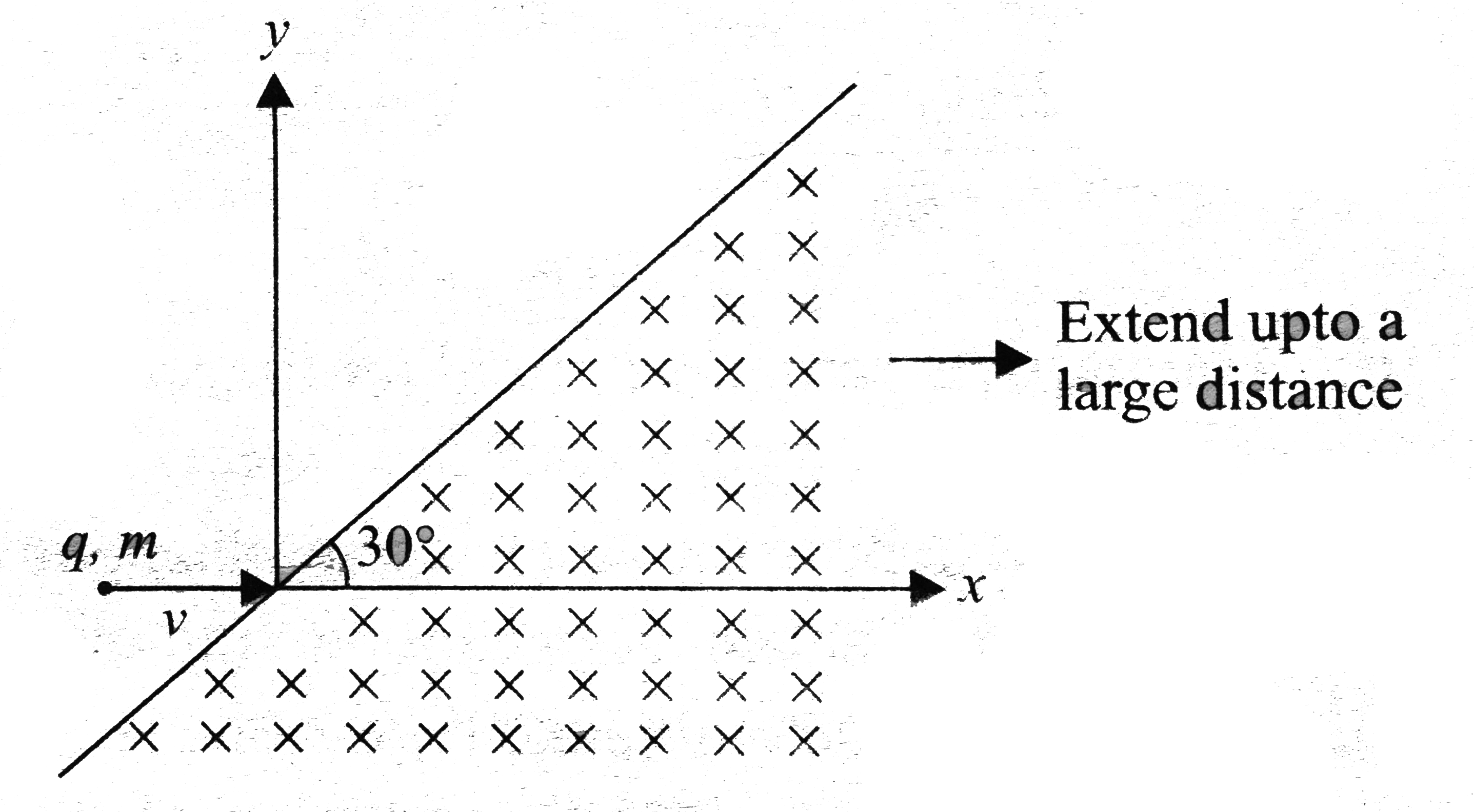A charged particle of unit mass and unit charge moves with velocity →v=(8ˆi+6ˆj)ms−1 in magnetic field of →B=2ˆkT. Choose the correct alternative (s).
The path of the particle may be x2+y2−4x−21=0
The path of the particle may be x2+y2=25
The path of the particle may be y2+z2=25
The time period of the particle will be 3.14s.
The correct Answer is:B,D
r=mvqB=1×101×2=5m,T=2πmqB=2π×11×2=π Path of particle will be circle having radius equal to 5m
Topper's Solved these Questions
- BOOK - NARAYNACHAPTER - MOVING CHARGES AND MAGNETISMEXERCISE - LEVEL-VI (SINGLE ANSWER QUESTION)81videos
MOVING CHARGES AND MAGNETISM
- BOOK - NARAYNACHAPTER - MOVING CHARGES AND MAGNETISMEXERCISE - Level =I (H.W)42videos
MOVING CHARGES AND MAGNETISM
- BOOK - NARAYNACHAPTER - MOVING CHARGES AND MAGNETISMEXERCISE - NCERT Based Questions20videos
MOVING CHARGES AND MAGNETISM
- BOOK - NARAYNACHAPTER - MAGNETISM AND MATTEREXERCISE - EXERCISE - 4 (SINGLE ANSWER TYPE QUESTION)17videos
MAGNETISM AND MATTER
- BOOK - NARAYNACHAPTER - NUCLEAR PHYSICSEXERCISE - LEVEL-II-(H.W)9videos
NUCLEAR PHYSICS
Similar Questions
A charged particle of mass 5mg and charge q=+2μC has velocity →v=2ˆi−3ˆj+4ˆk. Find out the magnetic force on the charged particle and its acceleration at this instant due to magnetic field →B=3ˆj−2ˆk,→v and →B are in m/s and Wb/m2 respectively.
View SolutionConsider the motion of a charged particle of mass m and charge q moving with velocity →v in a magnitude field →B. If →v is perpendicular to →B, show that it describe a circular path having angular frequency ω=qBm
View Solution
Knowledge Check
- Question 1 - Select One
A charged particle of specific charge α moves with a velocity →v=v0ˆi in a magnetic field →B=B0√2(ˆj+ˆk). Then (specific charge=charge per unit mass)
Apath of the particle is a helixBpath of the particle is circleCdistance moved by the particle in time t=πB0αisπv0B0αDvelocity of the particle after time t=πB0αis(v02ˆj+v02ˆj) - Question 2 - Select One
A charge particle moves with velocity →V=Aˆi+Dˆj magnetic field . →B=Aˆi+Dˆj The force acting on the particle has magnitude .F Then,
AF = 0 , if aD = dABF = 0 , if aD = -dACF = 0 , if aA = -dDDF∝(a2+b2)1/2×(A2+D2)1/2 - Question 3 - Select One
A charge particle of charge q and mass m is moving with velocity v as shown in fig In a uniform magnetic field B along -ve z-direction.Select the correct alternative (s).
 AVelocity of the particle when it comes out form the magnetic field is →v−vcos60∘ˆi+vsin60∘ˆjBTime for which the particle was in magnetic field is πm3qBCDistance travelled in magnetic field is πmv3qBDNone of these
AVelocity of the particle when it comes out form the magnetic field is →v−vcos60∘ˆi+vsin60∘ˆjBTime for which the particle was in magnetic field is πm3qBCDistance travelled in magnetic field is πmv3qBDNone of these
(a) Write the expression for the force →F acting on a particle of mass m and charge q moving with velocity →v in a magnetic field →B. Under what conditions will it move in (a) a circular path and (ii) a hetical path?
View SolutionA charged particle moves with a velocity →v in a uniform magnetic field →B. The magnetic force experienced by the particle is
View SolutionA particle of charge q moves with a velocity →v=aˆi in a magnetic field of →B=bˆj+cˆk where a ,b and c are constants. The magnetic of the force experienced by the particle is
View SolutionA charged particle moves with velocity →v in a uniform magnetic field →B. The magnetic force experienced by the particle is
View SolutionA particle of charge per unit mass α is released from origin with a velocity →v=v0ˆi uniform magnetic field →B=−B0ˆk. If the particle passes through (0,y,0), then y is equal to
View Solution

